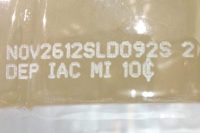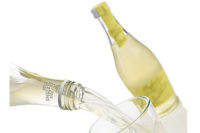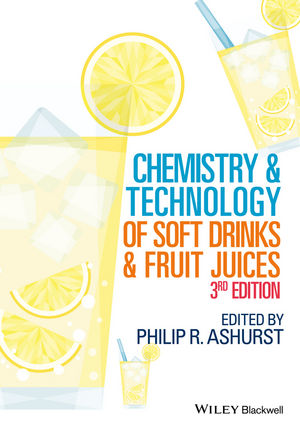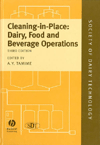Coding technology addresses flexibility
Container shapes, speed affect machinery designs

ID Technology’s Citromix inkjet printers prompt customers through the coding process and include shortcut keys to take users directly to the functions needed.







With beverage containers available in a number of shapes and sizes, beverage companies are seeking flexibility when printing lot and date codes as well as logos with coding installations for a range of package sizes and materials.
“One major trend is the proliferation of beverage container sizes, shapes and flavors and the resulting variety of packaging running through a single production line,” says Drew Weightman, vertical marketing manager for beverages for Videojet Technologies Inc., Wood Dale, Ill. “This is creating the need for flexible coding installations that can accommodate a range of packaging sizes and materials as well as ease the frequent line changeovers that all these different packages necessitate.”
Weightman adds that for flexibility, beverage-makers want coding equipment to allow for quick changeover and coders to act as a virtually invisible element within the production line.
Coding equipment manufacturers have seen customers use different types of packaging sizes and shapes to aid marketing and branding efforts, which can make the equipment setup that much more important.
“These various shaped and sized containers make set-up and product handling much more critical,” says Bill Andre, laser product manager with
ID Technology, Fort Worth, Texas.
Although flexibility remains an initiative for many coding equipment manufacturers, companies also are looking at ways to address demands for higher speeds.
“Everybody wants to increase their hourly and daily production rates, and that means that our lasers have to make more parts per minute to meet these requirements and expectations,” Andre says. “Also, the beverage industry is putting more information on each individual product, so not only do we have to print faster, but we need to print more information faster.”
Coding equipment companies also know the importance of accuracy. Companies want to ensure that the correct code is printed on the product, which is highlighted with the increasing number of products available in the beverage industry.
“An increasing variety of products, flavors, package sizes and shapes means more frequent production changeovers, leaving producers vulnerable to coding and packaging errors,” Weightman says.
Videojet addresses these concerns with its SmartCode model, which enables continuous verification of individual packaging units to ensure that the UPC matches the packaging and code selected, he says.
Meeting the demands
With beverage producers seeking flexibility, fast changeover, environmental concerns and much more, coding equipment manufacturers are addressing those demands with a variety of options.
Markem-Imaje, Kennesaw, Ga., launched a new, small character inkjet printer, the flagship model of its 9000 series, the 9232, which prints best-before dates, logos, alphanumeric text and one-dimensional and two-dimensional barcodes. It also features print speeds up to 21.7 feet per second with font height up to 32 dots, the company says.
“The recent economic crisis and the latest updates on environmentally sound practices have demonstrated that both total cost of ownership of the printing equipment and environmental protection need to be considered during the design stage of every product,” said Pascal Vergniaud, product marketing manager of the small character inkjet line for Markem-Imaje, in a statement. “Everything needs to be covered; the printer of course, but also consumables, maintenance and service. With the 9232, Markem-Imaje addresses this trend.”
The 9232 allows for optimal and transparent management of overall printing activities resulting in enhanced cost control, environmental impact reduction, better printing results and optimization of the operator’s time, the company says.
With inkjet applications, equipment manufacturers have noted that lightweighted materials have not had the same effect as with laser applications.
“ID Technology offers a variety of inks capable of working with many different substrates,” says Guy Bradford, inkjet product manager with ID Technology. “Lightweighted plastic bottles should not have an impact on continuous inkjet technology (CIJ).”
ID Technology’s Andre says lightweighted containers have brought about more challenges for laser equipment to address.
“With such a thin sidewall, you have to be able to control your laser throughout the marking process to avoid puncturing the surface, which would result in a leak,” he says. “We are able to do this within our software to avoid this problem at any speed, and it does not matter if we are using a dot matrix font or a vector font.”
Due to the increased use of lightweight plastic bottles, equipment manufacturers continue to innovate their product offerings.
“The lightweighting of plastic bottles has had little impact on CIJ coders, as our current ink-based codes work just as well on thin-walled containers as they did on the preceding container types,” Videojet’s Weightman says. “For laser coders, on the other hand, lightweighting had a significant impact as thinner walls presented a risk of the traditional lasers punching through the PET or unsatisfactorily weakening it. We saw this very early in the development of ultra-lightweight PET containers by bottled water companies and quickly incorporated a novel modification to our lasers.”
The company uses a 9.3 micron laser tube that uses different wavelengths of light to avoid engraving on the plastic surface, Weightman says. The wavelength creates a “frosted effect” that reduces the depth of the code and yields a brighter and more readable code, he adds.
“This modification, combined with our development of a non-crossover font for laser coding, enables us to mark comfortably on the latest lightweighted bottles,” Weightman says.
Domino Amjet Inc., Gurnee, Ill., also uses a special laser wavelength capability for high contrast and high-quality “frosted” codes, says Bill Bonaccorsi, director of marketing for Domino North America.
The company’s D-Series laser printer features an i-Tech scan head combined with mirror beam control and cooling, which ensures the production of high-quality codes even on the highest speed PET and labeling lines, he says. The series has a modular design and the flexibility of a compact i-Tech scan head, which allows for simpler integration into production lines, he adds.
“Domino D Series Laser technology can provide industry-leading code quality even at line speeds over 50,000 bottles per hour and 70,000 labels per hour,” Bonaccorsi says.
Although companies have adapted their laser technology to meet the demands for coding equipment and its use with lightweight plastic bottles, beverage-makers still are turning to inkjet printers to meet their needs, which have received updates in technology.
ID Technology is working on the ink itself. “Some of the latest advancements are in the development of inks that have the ability to penetrate chemical barriers that are applied to substrates as a result of the manufacturing process,” says ID Technology’s Bradford. “In many cases, a container may contain a chemical on the substrate that the standard inks cannot penetrate and adhere to effectively.”
ID Technology offers its brand of Citromix printers for inkjet applications. It prompts customers through the process and includes shortcut keys to take them directly to the functions needed, Bradford says. This meets the demands of shorter learning curves that Bradford sees beverage companies looking for when they install the technology.
Companies also are looking to enhance the inks to allow for bright codes on dark surfaces, such as amber glass bottles or dark plastic soda caps. Videojet’s new CIJ printer, the 1710, is designed to deliver high contrast, pigmented inks, Weightman says.
“The new 1710 coder is ideal for high volume or wet environments common among brewers and soft drink producers,” he says.
Weightman adds that the coder features many aspects of the 1000 line, such as the SmartCartridge ink cartridges, CleanFlow printhead and notable uptime among pigmented printers.
Domino’s A-Series CIJ printers offer an ink range that includes advanced and general purpose inks for use in everyday environments, specialist inks including fluids for highly specialized applications and custom inks to develop bespoke ink solutions for customers, the company says.
Bonaccorsi adds that the A-Series uses a Quickstep user interface technology for ease of use, to reduce the risk of entering incorrect codes and to provide strong protection against contamination along with ease of wash down.
Growing innovation
As coding equipment manufacturers have found ways to address the importance of flexibility and lightweighted plastic bottles, companies still are looking toward the next line of technology and customer demands.
“Beverage companies are more often demanding a coding partner that has the technical expertise and geographic coverage to deliver thoughtful integration of the coding system,” says Videojet’s Weightman. “With the increasing number and variety of beverage products running on a single line, effective coder integration may leverage networking to allow automatic updates of the code information or may involve selection of an appropriate fixture to hold the coder and eliminate calibration time between changeovers. Either way, having a trained service technician and installation team located nearby is becoming more important to beverage companies in selecting new coding equipment.”
But beyond service, Weightman also sees codes taking on broader roles in packaging. “We are already beginning to see great consumer interest in the variable codes found on food and beverage packaging, such as expiration dates or interactive content such as QR codes,” he says. “In addition, we expect that an increasing number of retail or distribution partners will find value in easily readable codes on beverage packaging and bottles to facilitate stock rotation on the shelf. Both of these trends suggest that in the future the quality and consistency of variable codes on beverage packaging will be increasingly important — coding technology must deliver that.”
Keeping with the notion of popular technology, ID Technology’s Andre thinks that many advancements could be on the horizon for coding technology.
“I see the equipment continuing to get smaller, faster and more economical,” he says. “I think we will see the opportunities for networking to continue to grow and become more complex. Software capabilities will continue to advance and make even the most difficult applications possible. I think we will see equipment controlled by applications that run on smartphones and tablets.”
In addition to the technological advancements that lie ahead,
ID Technology’s Bradford sees the importance of upgrading with the equipment that is available to companies now.
“I believe that with each generation, the technology becomes more and more reliable in their respective fields,” he says. “Products being manufactured today are of much better quality. We have seen warranties for various product lines extended from the standard one year to two to three years as the new standard.
“I am also seeing a trend toward simpler user interfaces with the latest software and technology available today,” Bradford continues. “This is a great time for customers who have not made the switch from using older, outdated technology to upgrade. Many features available today were not possible just five to six years ago.”
Whether it is speed, new technology or adhering to a variety of product assortments, coding equipment companies still understand the importance of working with their customers.
“Generally, coding technologies will continue to advance to meet the future demands of the beverage production world, i.e., faster speeds, ‘greener’ systems and supplies, increased automation, new packaging materials, etc.,” Domino’s Bonaccorsi says. “Another particular area that we believe will play a more significant role than ever is the creation of stronger end-user and supplier partnerships and reliance on suppliers. Those companies that can demonstrate true value by not only providing innovative equipment solutions, but also delivering strong customer responsiveness, attentiveness and industry expertise will rise to the top.” BI
Looking for a reprint of this article?
From high-res PDFs to custom plaques, order your copy today!












